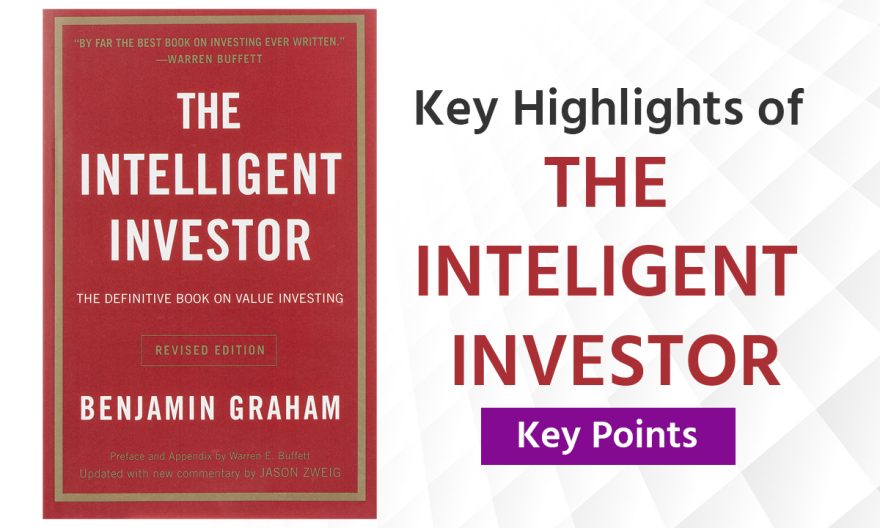
“The Intelligent Investor,” written by Benjamin Graham, is widely regarded as the bible of value investing. First published in 1949, the book provides timeless principles that have guided countless investors towards long-term success. Graham’s approach is rooted in fundamental analysis and emphasizes a disciplined, risk-averse strategy. This summary delves into the core concepts, strategies, and timeless wisdom contained in “The Intelligent Investor.”
Key Concepts
1. Investment vs. Speculation:
Graham differentiates between investing and speculating. Investing involves thorough analysis, seeking safety of principal, and aiming for an adequate return. Speculation, on the other hand, involves assuming higher risk with the hope of high returns, often based on market fluctuations.
2.The Margin of Safety:
One of the cornerstone principles of Graham’s philosophy is the margin of safety. This concept involves purchasing securities at a significant discount to their intrinsic value, thereby minimizing potential losses.
3. Mr. Market:
Graham personifies the market as “Mr. Market,” an irrational entity that offers securities at different prices daily. Investors should take advantage of Mr. Market’s mood swings by buying undervalued stocks and selling them when overpriced, rather than being influenced by his erratic behavior.
Investment Approaches
1. Defensive Investor vs. Enterprising Investor:
Graham categorizes investors into two types: defensive (or passive) investors and enterprising (or active) investors. Defensive investors seek to minimize risk and effort, opting for a diversified portfolio of high-quality bonds and stocks. Enterprising investors are willing to put in the time and effort to seek higher returns by researching undervalued stocks and bonds.
2. Diversification:
Both defensive and enterprising investors should practice diversification to mitigate risk. Graham recommends holding a mix of stocks and bonds, adjusting the allocation based on market conditions and personal risk tolerance.
Strategies for Defensive Investors
- Portfolio Allocation:
- A typical defensive portfolio might consist of 50% stocks and 50% bonds, though this ratio can be adjusted based on market conditions. The key is to maintain a balance that provides both growth potential and income stability.
- Stock Selection Criteria:
- Defensive investors should select large, conservatively financed, and established companies with a long record of dividends. These stocks should have a history of stable earnings growth and be purchased at reasonable valuations.
- Bond Selection Criteria:
- Bonds should be of high quality, such as government or highly rated corporate bonds, to ensure capital preservation and consistent income.

